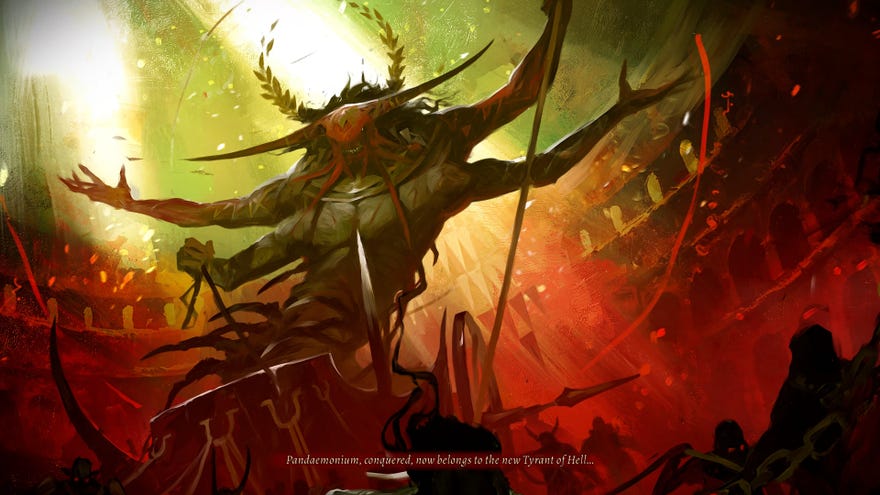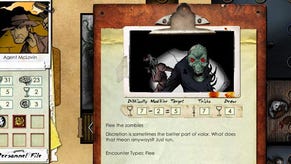Solium Infernum review: a fiendish strategy game best played with friends
Devil takes the hindmost
Satan has vanished, the throne of hell lies empty, and eight Archfiends are all jostling to be its chief seat warmer. It's a great setup for a role-playing strategy game, and the allure of plotting, scheming, backstabbing and shmoozing your way to victory remains as enticing today as it did when Solium Infernum first came to PC in 2009. At the time, it launched to relative obscurity, and was mostly kept alive by dedicated play-by-email multiplayer groups. It was through one of these groups that Armello developers League Of Geeks first came into contact with it, and now, years later, have taken on the task of remaking Solium Infernum for a modern audience.
The original Solium was, by all accounts, an intensely knotty and dense affair, impenetrable to newcomers, or at least to those who were unprepared (or unwilling) to study and absorb all the countless variations and statistics involved in creating your own unique Archfiend. It was a bit like creating a D&D character sheet, only about ten times more complicated, and whose strategic implications may or may not have made themselves apparent until it was far too late. You could biff yourself before you began, in other words, and League Of Geeks have made admirable attempts to tame and streamline this unruly hell beast, doing away with a lot of that initial fussiness. As is perhaps fitting for the theme here, there are unfortunately still a few pesky gremlins causing mayhem behind the scenes at time of writing (I'm pointing the finger at literal bug queen Beelzebub for this), but for the most part, there's good fun to be had in this new incarnation of Solium Infernum - and particularly if you have some willing friends who you soon hope to call enemies.
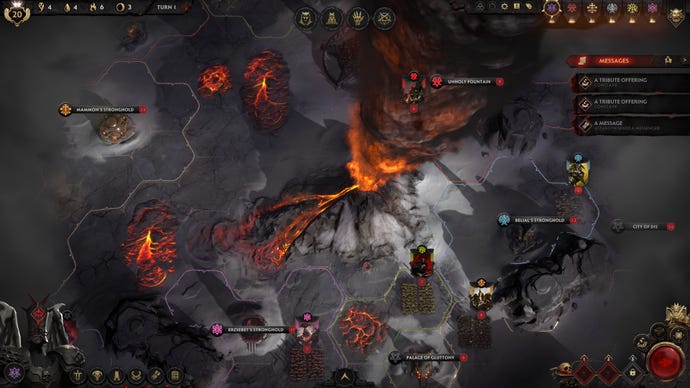
Before I get into the nitty gritty of how Solium Infernum works, let's take a beat to look at what you're actually getting. For solo players, there's a lengthy tutorial that lets you play a full game to completion, as well as a single match skirmish mode where you can play against the AI. Rounding it out are the Chronicles, a series of eight special scenarios where you play as specific Archfiends whose objectives to seize the throne become increasingly elaborate and challenging as you work up from the entry-level Moderate missions to the (definitely not kidding around) Hellish ones. Each of these will take you a good couple of hours to complete successfully, and with secondary objectives also factoring in to their respective bronze, silver and gold rankings, there's a sizable amount to sink your teeth into here before you exhaust everything.
Deep down, though, Solium Infernum is a game best played with your mates - or at least other human opponents. There are two multiplayer modes to enable this, and while up to six of you can all technically pile into a real-time match and hash out a game in one go, the spirit of Solium is best felt in its asynchronous mode, which is an excellent and modern interpretation of that old play-by-email style. Here, turns take place over days or weeks depending on how you configure your turn length timer, with full games stretching out over weeks, months or even years if you opt for its 70-turn maximum. Shorter game lengths are, of course, also available, with the shortest clocking in at a mere 30 turns, rising in increments of ten. Turns will also tick over faster if everyone submits their moves ahead of the timer, but be warned: the clock rolls on regardless of whether you submit your turn or not, potentially causing you to miss vital scheming in the process.
In playing games with fellow reviewers over the last couple of weeks, I've certainly been guilty of a few memory lapses now and again, but thankfully League Of Geeks have made brilliant and vital use of Steam's built-in notification system here to prompt you when new turns are available. It works on both desktop and Steam's mobile app, too, but I'd say the latter is a much more effective reminder than the silent, disappearing pop-up window on desktop. For me, the mobile app was an essential tool in making me log in, have a ponder, submit my turn, and then log back out again, so I'd strongly recommend installing Steam on your phone if you plan to play this for the long haul.



But enough dilly-dallying. Let's get to the business of how one rules over hell and, most importantly, rubs it in the faces of all the other Archfiends in the process. Solium is, at its heart, a game of social deduction, and is perhaps best thought of in the same breadth as your Werewolves, Secret Hitlers, and Battlestar Galactica board games. It's a very cerebral and calculating type of tactical experience, and one where the territory-expanding powerplays you act out on the (conveniently) hexagonal fields of hell are just as important as the ones you conduct behind the scenes.
The latter can encompass casting spells and hexes on your opponents to either cripple them ahead of battle or take a peek into their coffers to see what they're planning, or maybe even sending notes to strike up secret, if somewhat temporary alliances between players. Or perhaps you'd prefer to amass your own collection of stat-boosting artifacts, ability-bestowing manuscripts or army-boosting praetor champions to build up your defences and strengthen your legion foot soldiers. You'll need coin (or tribute, in the game's parlance) to fund these ventures, but getting more of it will require you to give up one of your initially very limited action points, so deciding how and when to bolster your coffers at the expense of other actions is all part of what makes Solium such a meaty and fiendish game to try and untangle. Alternatively, you can invest that tribute currency into your own five core power stats, earning yourself not just more action points in the process, but also increasing your resistance to the plots and ritual spells of your enemies.
Diplomacy, of a sort, is a viable option as well, though in hell the demands are always high, and refusals come with devastating consequences. Insults can lead to territory invasions or a duel between praetors, and if you end up suffering the indignity of accepting or giving in to these demands, you'll lose some of your all-important Prestige in the process.
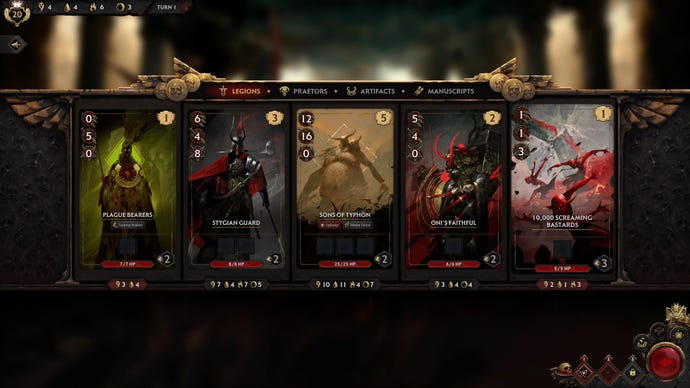
Prestige is the lifeblood of Solium Infernum, and the all-important marker of your chief seat warming abilities. Provided someone doesn't try and take the court of Pandemonium by force, the player with the most prestige at the end of a game will be declared the winner, so knowing when to give in and when to resist and fight back against incoming vendettas is another crucial part of playing Solium Infernum well. Although, if you're particularly dastardly, you can always opt to become a puppet ruler instead, giving the appearance of backing a certain Archfiend while simultaneously preparing to sweep their victory from beneath their scaly little feet if they end up the 'winner'.
As you might have surmised, there are many paths to the throne of hell, and with turns all resolving simultaneously, watching everyone clamber hand over foot as they react to the ensuing carnage play out is precisely what gives Solium Infernum such strategic bite. Plans will be thwarted, schemes will be scuppered, and emotions will always run high - which is quite the feat considering this is ultimately quite a grey and quiet sort of game in the moment to moment, its moody organs and cherubic vocal blasts often only reserved for key events and proclamations. That it can provoke such vivid and primal reactions in you is a testament to its depth and cunning.
At the same time, though, there are still some significant hurdles in the way before you can truly start enjoying Solium Infernum. While the tutorial does a good job of explaining the basic concepts of the game, the business of getting to grips with each of the eight Archfiends' strengths and weakness still remains a daunting and difficult task. Yes, having eight defined characters is an infinitely better solution to the near-infinite possibilities you had in the original Solium, but they are still difficult to unpick without proper tutelage.
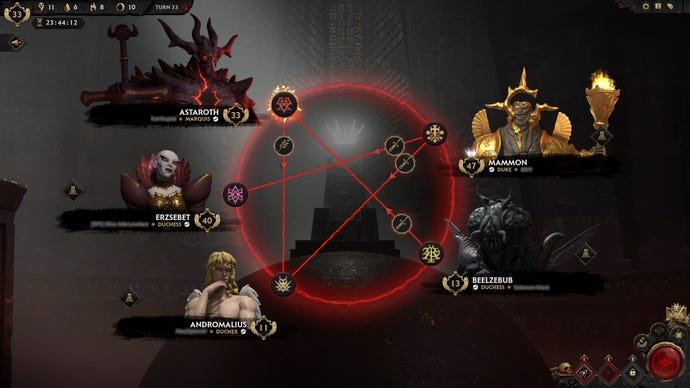
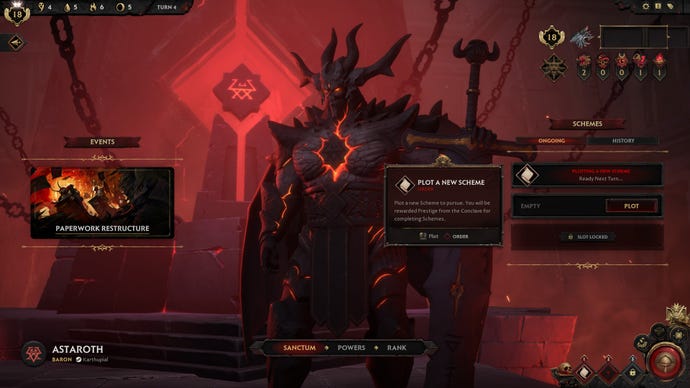
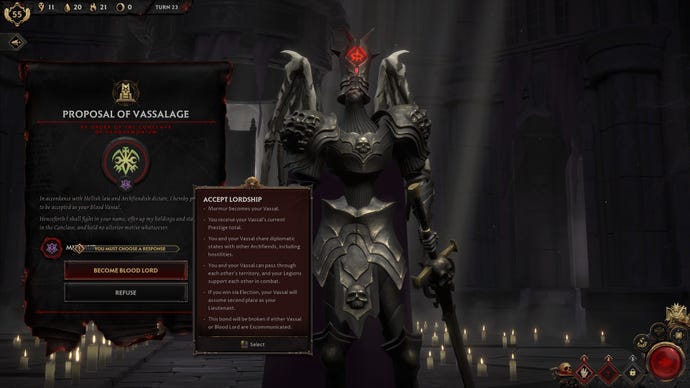
The Chronicles certainly help on this front, as each scenario feels uniquely tailored to really getting the most out of their particular play styles. But at the same time, trying to learn the ins and outs of Queen of Flies Beelzebub, or how smug pants Andromalius is best utilised on Hellish difficulty (and only Hellish difficulty) is perhaps a leap too far for your average player (I mean me, I'm your average Solium player). Indeed, your only other option is to simply muck about in a "short" 30-turn skirmish against the AI, but even this is still quite the commitment, especially if you're feeling around in the dark while also trying to juggle and react to multiple stratagems across what can be quite slow-moving turns to begin with. It can easily slide into slog territory, which could have been avoided if the Chronicles had a wider variety of difficulty settings.
Similarly, while the Chronicles do a good job of highlighting all the different ways one can gain Prestige to earn a victory, the simplest and easiest way to do this is to capture as many Places Of Power on the map as possible. These are the only real reason you'll want to expand and hold your territory in Solium Infernum (besides paving an easy path to Pandemonium, of course), as there's basically nothing else to really focus on. There are no mines or resources to pilfer, for example, or any other points of interest to draw the attention of your opponents. As such, most battles and vendettas will be fought trying to claim Places Of Power for your own, and having played lots of games in reasonably quick succession, matches all start to fall into the same old patterns as a result.
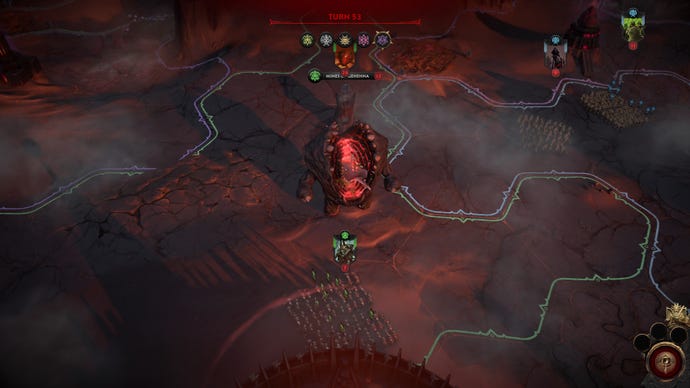
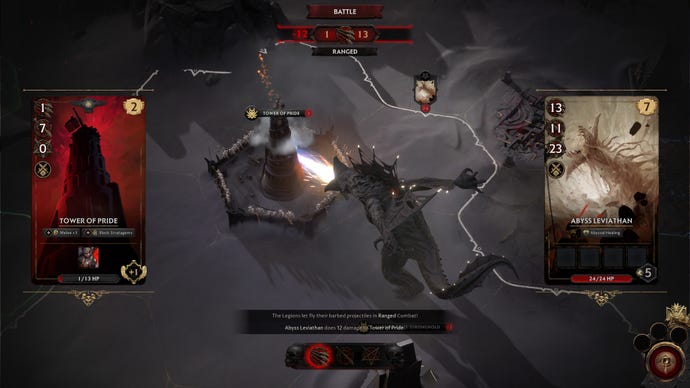
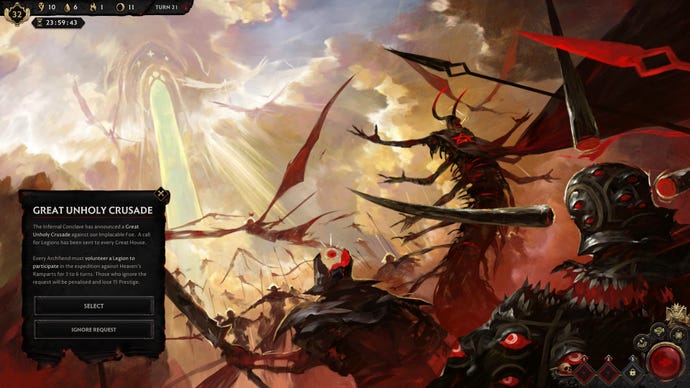
This alone may be reason enough to encourage players to experiment with alternative routes to victory. But having attempted some of them via the Chronicles scenarios, I've yet to be convinced that they're really worth the effort. Admittedly, the emphasis is very much on 'attempt' here, as I've come to realise that I either don't have the mega brain to pull them off successfully, or they are, in fact, just a bit too fussy and long-winded to pull off properly. Indeed, for all the very welcome efforts League Of Geeks have made to make this version of Solium as approachable as possible, this is still a very hard and challenging game at the end of the day, and it will take you multiple matches to really feel like you know what you're doing (and even then, there are still parts of this game that feel under-tutorialised - praetor duels, I'm looking at you).
Then again, if you're up for a challenge and thrive on chucking everything at the wall to see what sticks, then Solium Infernum has plenty to offer here. Despite feeling like I've been flying by the seat of my pants in a lot of scenarios, I've ultimately had a great time playing this over the last few weeks - even if persistent crashes on victory screens or black screens when loading up event cards has dulled the impact of some pivotal moments. Thankfully, the generous auto-save meant I never ended up losing anything, but it's a shame nonetheless that there are still some quite critical bugs lingering in hell's hallways. I'm hopeful that the Day One patch will nix a lot of these on release, but even so, I encountered enough of them during my review time (including one that prevented me from going after an excommunicated player when they attacked Pandemonium) that I'd be hesitant to give it a fully and whole-hearted recommendation at the moment. There's a brilliant game to be found in here, but only once its bugs have been fixed, and if you're prepared to wade, once again, through its dense and knotty machinations to get the best from it.
This review is based on a review build of the game, provided by developers League Of Geeks.
